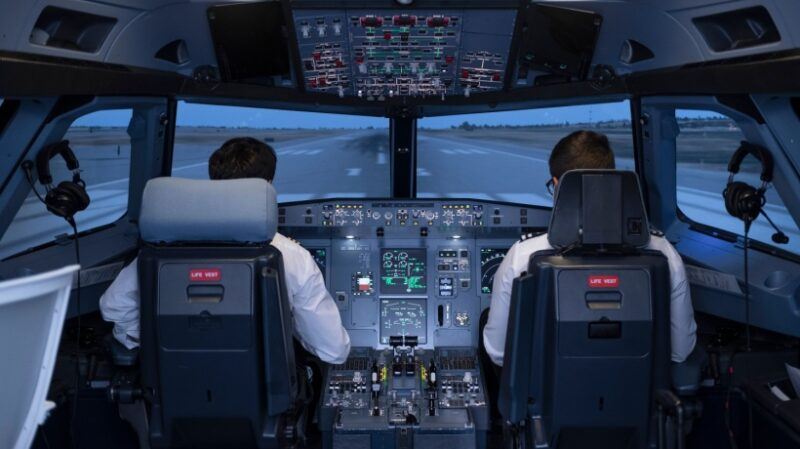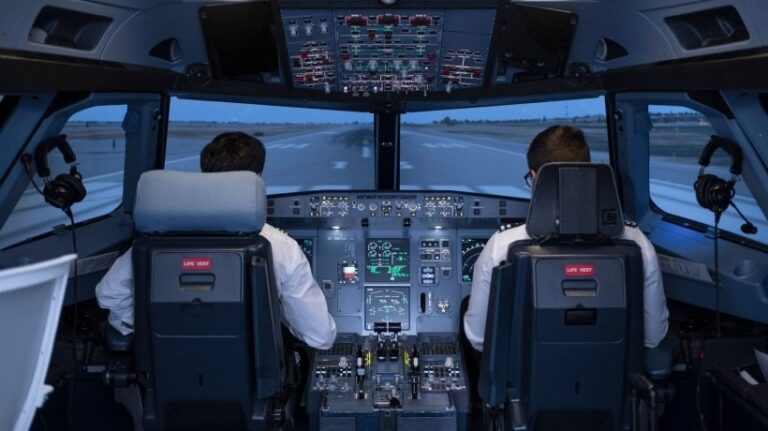
Scalable Aviation Training Requirements
Airline maintenance companies and airport authorities facing changing challenges, from regulatory requirements to increasing complexity in aircraft systems, have proven Digital Learning is a strategic differentiator. It makes efficiency more convenient, increases knowledge retention, and keeps aviation professionals in adaptability and future prevention. Historically, aviation training has been dominated by face-to-face education, flight simulators, and on-site training. These practices remain essential, but are constrained. It is expensive, has high logistical challenges, and limited scalability. In a modern environment of travel demand after the high pandemic, growing fleets and rising labor forces, aviation stakeholders need faster, smarter, and more scalable means to train.
Digital Learning – An environment that includes e-learning modules, virtual simulations, mobile learning apps, and artificial intelligence (AI)-based adaptive training. These technologies change the way pilots and cabin crews learn the necessary skills from maintenance engineers and ground handlers.
Key Benefits of Aviation Digital Learning
1. Standardization regardless of location
Global airlines and MRO companies with international operations struggle to provide a unified learning experience. Digital learning allows businesses to standardize content and provide staff in New York or New Delhi with the same high quality training that meets regulatory guidelines such as the ICAO (International Civil Aviation Agency), EASA (European Union Aviation Safety Agency), or FAA (Federal Aviation Aviation Administration).
2. Just-in-time training and microlearning
Aviation protocols usually require rapid decision-making and situational awareness. A brief description of microlearning, the focus module provides important information when staff are ready to learn it. It could be a five-minute review course on emergency procedures or aircraft inspection checklists, and the digital channel can offer these bite-sized lessons on your smartphone.
3. Simulation-based learning for mastering skills
Virtual reality (VR) and simulation are powerful selling points for aviation education. Virtual reality mimics real-world situations such as emergency landings, equipment breakdowns, and air traffic control dialogues. VR training can significantly reduce training spending while improving high stakes decisions and muscle memory.
4. Personalized Feedback and Real-Time Evaluation
Learning Management Systems (LMSS) and artificial intelligence analysis allow for easy monitoring of learners’ progress, diagnostic assessment of gaps, and content adjustments. For example, a mechanical engineer who is having problems with one particular model engine can provide targeted interventions in the form of training to increase competence and confidence.
5. Continuous learning in a ever-changing industry
Continuous improvements to aviation technology, rules, and processes for safety have prevented learning to remain an episodic process. Digital platforms promote continuous learning by easily updating training content and enabling it to be deployed in real time across the workforce.
Case Study: Pilot and Engineer Training with eLearning
Several international airlines are already on the path of digital learning and are seeing concrete results. Large careers incorporate augmented reality (AR)/VR simulations into their maintenance training courses, saving training time by 25%, and for the first time in certification tests, the passing rate increased by 30%. Another airline has introduced AI-powered flight scenario simulations that adapt to the pilot level, reducing repeated use of simulators while keeping capabilities intact.
Overcoming implementation challenges
Despite the obvious benefits, implementing digital learning in aviation is not without some challenges. Some of the main hurdles are:
Resistance to change
Aviation has a rich culture of practical, instructor-led training. With acceptance from experienced trainers and regulatory agencies, conclusive proof of effectiveness is required.
Access to technology and integration
Ensuring learners have access to the devices, bandwidth and simple platforms they need is essential to achieving.
Content relevance and accuracy
Due to the high aviation environment, content must be accurate, up-to-date and compliance standards.
Organizations that can overcome this barrier often start with blended learning strategies (i.e., sync with online modules, synced learning combined with online modules) before moving completely into a digital environment.
Future: AI, AR, and beyond
Looking to the future, the use of artificial intelligence, augmented reality and predictive analytics will take aviation training to new heights. AI can check flight data and propose individual learning routes. AR glasses can guide technicians through staged maintenance. Predictive analytics can detect skill gaps before they affect operations.
Conclusion
As the aviation sector looks at the future of autonomous systems, green aviation and intelligent airports, digital learning is at the heart of workforce preparation. It not only improves knowledge retention and operational efficiency, but also promotes a culture of continuous improvement and safety. By adopting e-learning, aviation leaders can equip their labor for tomorrow’s skies.
Hexalearn Solutions Private Limited
ISO Certified Learning & Software Solutions Company.


